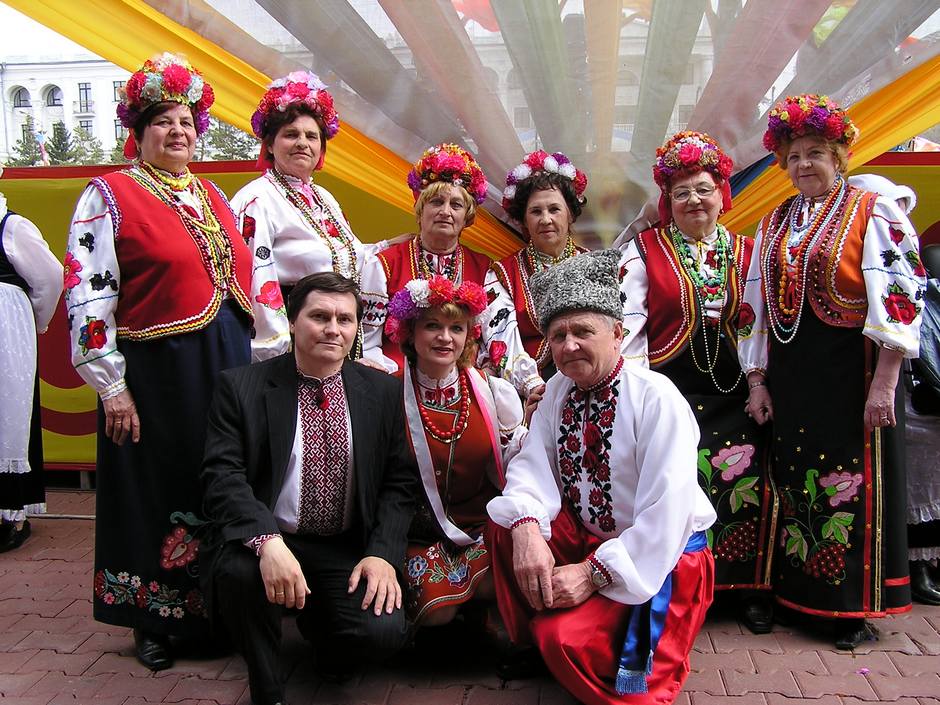ASTANA – Vatra, the capital-based Ukrainian cultural centre founded in 1993, has contributed toward the educational and cultural development of Kazakhstan’s ethnic Ukrainian community. It is among 26 such Ukrainian centres in the country.
According to Kazakhstan’s 2009 population census, approximately 333,000 Ukrainians resided in the country, composing 2 percent of the total population. The current figure is estimated at just under 300,000.
Despite the gradual decrease in numbers throughout the years, the Ukrainian community has been proactively reviving its cultural heritage, made possible by the Kazakh Constitution provision regarding the free development of ethnic groups’ cultures.
Taras Chernega has been the Vatra head and council chairperson since 1997. A candidate of philological sciences, he is also the editor-in-chief of “Ukrainian Noviny” (“Ukrainian News”), the national Ukrainian-language newspaper, and deputy chairperson of the Association of Ukrainians of Kazakhstan.
“The centre’s name aptly reflects its community and activities,” said Chernega. “In Ukrainian, ‘vatra’ refers to hearth, fire and bonfire.”
In naming the centre, surgeon, scientist and maslikhat (city administration) member Zinovii Gritsulyak hoped to convey how it could come to gather and connect like-minded people and warm their hands and hearts over a symbolic campfire.
Vatra’s main activities focus on education and culture. The centre has operated a Ukrainian Sunday school since 1992, which school students attend regularly to study language, culture and history.
The centre hosts celebrations of Ukrainian and Kazakh public holidays and customs. Chervona Kalina, a Ukrainian vocal ensemble, is a regular performing act and its rich repertoire includes more than 100 songs in Ukrainian, Russian and Kazakh. Vatryanochka, a Ukrainian dance ensemble led by choreographer Yuliya Amirova, has been performing since 2008.
Vatra has published “Ukrainian Noviny” for more than 24 years. When the first issue was circulated in 1994, President Nursultan Nazarbayev congratulated the Ukrainian community on its timely release, as strengthening peace and harmony in a diverse society has always been a key priority. The newspaper remains the only weekly Ukrainian-language publication in Asia.
The importance and presence of the centre’s current work is tied to the history of Ukrainians in Kazakhstan. Individual Ukrainian settlements on present-day Kazakh territory appeared as early as the 15th Century, when individual explorers gained a better grasp of the Trans-Urals, Siberia, northern and eastern Kazakhstan and the Far East.
Another migration flow occurred during the more violent context of the early 18th century, when participants in the 1768 Koliivshchyna uprising and Zaporozhye Cossacks of the 1775 Zaporozhian Sich destruction were sent to the Kazakh steppes along the valleys of the Ilek, Irtysh, Ural Tobol and Yessil rivers.
In the second half of the 19th century, the resettlement flow to Kazakhstan increased significantly following the Russian Empire’s 1861 abolition of serfdom and the 1894 Siberian railway opening. Immigrants from Chernigov, Ekaterinoslav, Kharkov, Kherson, Kiev, Poltava and Tauride settled primarily in present-day Akmola, Kostanai and East, West and North Kazakhstan regions.
The greatest immigrant flow came at the turn of the 19th century, when the foundation of Kazakhstan’s Ukrainian community was established. Still, the term ‘flow’ conceals the rather complex settlement timeline and its socioeconomic characteristics. The resettlement occurred concurrently with movement from Ukraine to Siberia and only then eastward to Kazakhstan.
“If we talk about ‘waves’ of Ukrainian migration to Kazakhstan, the first of them should be attributed to the end of the 19th century,” said Chernega. “The second resettlement wave is associated with the Stolypin land reform in 1906-1917. The next, most significant wave of migrations was repressive in nature, during the period of the forced collectivisation of peasant farms.”
Subsequent mass migration flows include the Great Patriotic War military evacuation relocations, post-war relocations of Soviet repression victims and political prisoners and resettlements associated with work on the Virgin Lands Campaign.
“The help of Kazakhs to Soviet repression victims and political prisoners, who were branded as the ‘enemies of the state’ and with whom they shared their last pieces of bread, was immense. This page in our common history deserves separate discussion and appreciation,” he added. “No matter how paradoxical it may seem, it is in the years of grave misfortunes and mass repression when a solid foundation of tolerance and mutual compassion for each other as representatives of various ethnic groups, bound by a common misfortune and fate on shared ground, was laid.”
The difficult common times firmly united Kazakhstan’s indigenous and non-indigenous inhabitants towards shared aspirations to survive and thrive, no matter the circumstances.
“The best human qualities which were crystallised then, such as compassion, good neighbourliness and a lack of selfishness, came to define the character of Kazakhstan’s nationalities for decades to come,” said Chernega.
Ukrainian ethno-cultural associations also operate in Aktau, Aktobe, Almaty, Karaganda, Kostanai, Pavlodar, Semipalatinsk and Ust-Kamenogorsk.
“As you can see, the descendants of Ukrainian immigrants continue to cherish the culture and traditions of their people on the Kazakh steppes,” he added.


